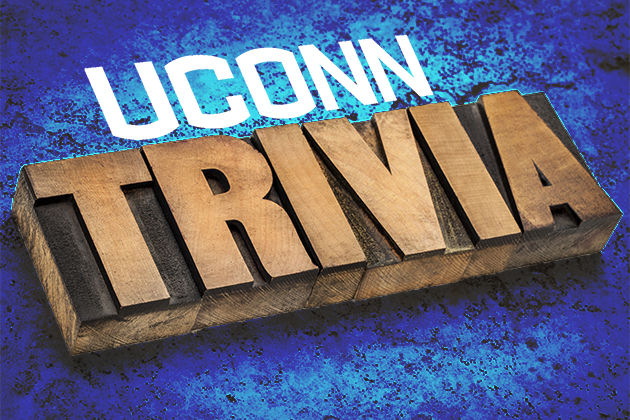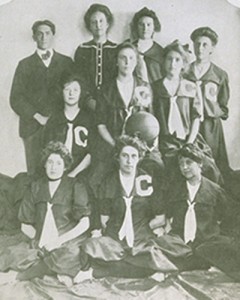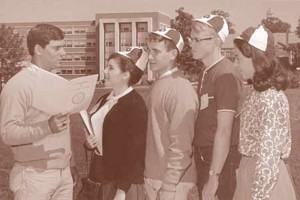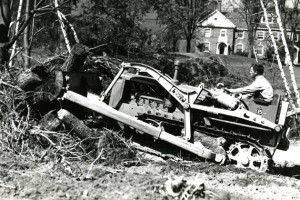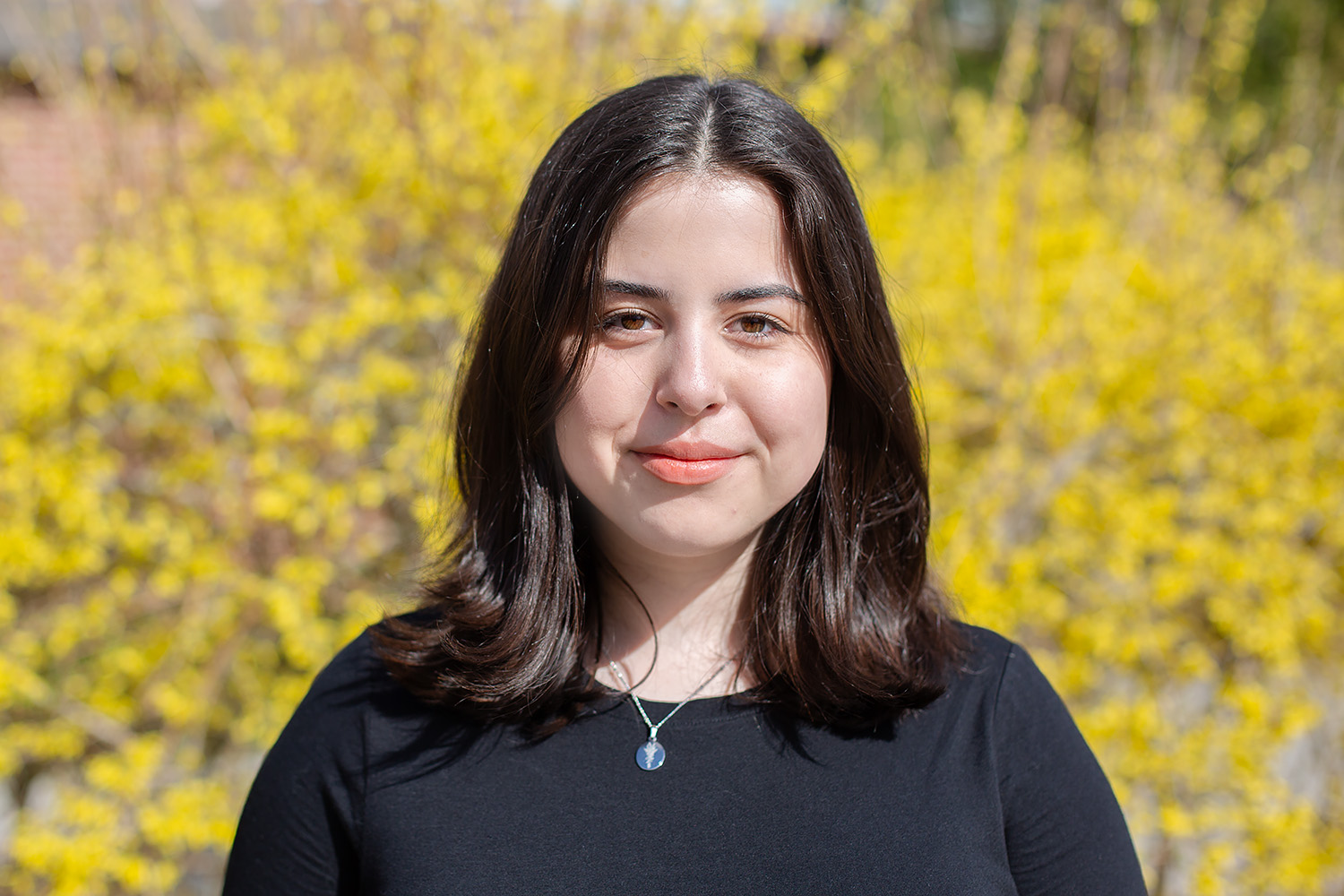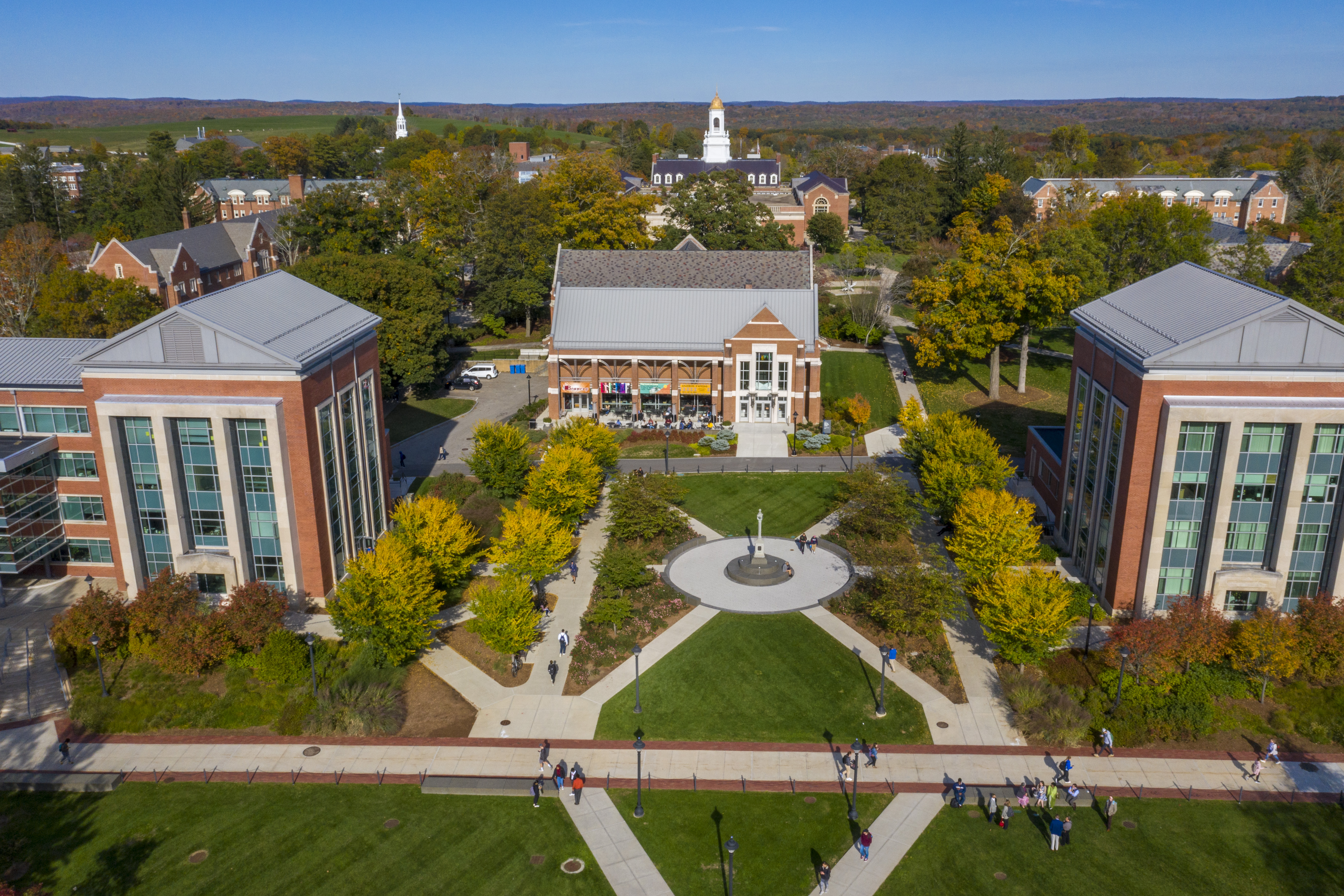Answers to UConn's holiday trivia quiz.
Q: In 2016, UConn’s Stamford campus will add student housing for the first time. But it won’t be the first campus outside Storrs to include residences for students. Which campus came before it?
1. UConn Health Center
2. Avery Point
3. Fort Trumbull
4. The Depot Campus
A: Fort Trumbull. From 1946 to 1950, more than 5,000 students – mostly GIs returning from World War II – attended classes at the renovated Maritime Training School in Fort Trumbull, a property acquired by UConn to handle enrollment that had quadrupled from its pre-war levels. The Fort Trumbull campus, nicknamed “Siberia” because of its distance from Storrs, included a bookstore, dining hall, student radio station, and a weekly campus newspaper called the Trumbull Tide. The Depot Campus was a residential facility in its days as the Mansfield Training School, but that came to an end before UConn took over responsibility for the property.
Q: What campus building is named for an English professor who never taught a class at UConn?
1. Wilbur Cross
2. D.C. Phillips
3. John Graham Mellor
4. A.B. Bronwell
A: Wilbur Cross. Cross, a Mansfield native, taught English at Yale and was the first dean of that university’s graduate school. He served as governor of Connecticut from 1931 to 1939, and during that time he sponsored legislation that funded the expansion of the UConn campus and the building of its first library, named the Wilbur Cross Library, which now houses numerous student services offices as well as Wilbur’s Café.
Q: In 1893, the Connecticut General Assembly passed legislation allowing for the admission of women as students at what was then the Storrs Agricultural College. What year did the first women graduate from what is now UConn?
1. 1893
2. 1897
3. 1894
4. 1890
A: 1894. Even though they weren’t allowed as students under state law, the college began admitting women in 1890, thanks to President Benjamin Koon’s belief in the importance of educating men and women together. Nellie Wilson, a Mansfield native, was the first woman to enroll at what is now UConn, and since she walked to class every day from home because there was no dorm for women, also the first commuter student.
Q: What was the win-loss record for the UConn women’s basketball team’s very first season?
1. 1-5
2. 10-3
3. 0-1
4. 2-0
A: 2-0. In February and March 1902, women students at what is now UConn played their first organized basketball games, both against Willimantic High School. UConn won 15-6 and 25-6. Standout players for the team included Grace Koons, daughter of the school’s former president, Benjamin Koons, and team captain Marjorie Monteith, daughter of history professor Henry R. Monteith. In 2002, 2009, and 2010, the UConn women’s team would again achieve undefeated seasons, to significantly greater fanfare.
Q: A UConn alum is currently the leader of which minor United States political party?
1. Prohibition Party
2. American Conservative Party
3. Party for Socialism and Liberation
4. Communist Party USA
A: Sam Webb has been the chairman of the Communist Party USA, the largest and oldest Communist organization in the country, since 2000. He has a master’s degree in economics from UConn.
Q: Until the end of the 1960s, what were members of the UConn freshman class required to wear during Orientation Week?
1. Blue and white articles of clothing
2. Shirts emblazoned with the letter ‘F,’ for “freshman”
3. Beanies
4. Roller skates
A: Beanies. Starting in 1922, freshmen were forced to wear beanies (cloth caps) during their first semester, a common practice at universities. By the 1960s, this was reduced to Orientation Week. At UConn, the practice largely came to an end in 1968, when freshmen were allowed to donate money to famine relief in the breakaway African nation of Biafra rather than wear a beanie. The so-called “Beanies for Biafra” campaign, organized by the UConn chapter of Students for a Democratic Society, netted more than $214 that year.
Q: Two days before classes started in September 1938, the devastating East Coast hurricane blew through campus, knocking out power, drenching students, and uprooting trees like the ones that used to be located on what’s now called the Great Lawn. How many trees on campus were lost in that storm?
1. 187
2. 5,823
3. 10
4. 1,721
A: 1,721. Two students, Barbara Everett and Rod Longley, divided up the campus between them and counted all the fallen trees. In the aftermath of the storm, messages were broadcast to students and parents by makeshift radio hookup, and the student newspaper was produced on a hand-cranked mimeograph press. And incidentally, classes started on schedule that semester.
Q: Speaking of emergencies, the Storrs campus has convenient “blue light” call boxes strategically placed to allow members of the public to contact emergency services immediately and, if necessary, also to broadcast messages. There is one “blue light” for every year UConn has been open, plus 149 more. Quick! How many lights is that?
1. 249
2. 281
3. 300
4. 193
A: There are 281 blue lights on campus. The institution that became UConn opened its doors 132 years ago, in September 1881.
Q: Starting from its 1881 founding, the Storrs Agricultural School required students to do what activity every day?
1. Homework
2. Milk cows in the barns on Horsebarn Hill
3. Attend religious services
4. Sing the school’s fight song
A: Attend religious services. Students were required to attend chapel services every day while school was in session, which generally meant worship at what is now the Storrs Congregational Church. Until 1932, the church provided for-credit religious education classes to students, and its minister served as university chaplain until 1960. The other houses of worship along North Eagleville Road weren’t built until after World War II.
Q: The first-ever graduating class from the school that became UConn had six members; some of them went on to finish high school. One hundred and thirty-two years later, how many degrees were awarded to UConn students in May?
1. 1,881
2. 7,979
3. 5,635
4. 10,013
A: 7,979 undergraduate, graduate, and associate’s degrees were awarded in May 2013, including 5,575 bachelor’s degrees, 1,537 master’s degrees, and doctorates in law, medicine, pharmacy, philosophy, dental medicine, physical therapy, audiology, musical arts, education, and nursing practice. To put that in perspective: There were four times as many degrees awarded this year as there were total enrolled students in 1941.
